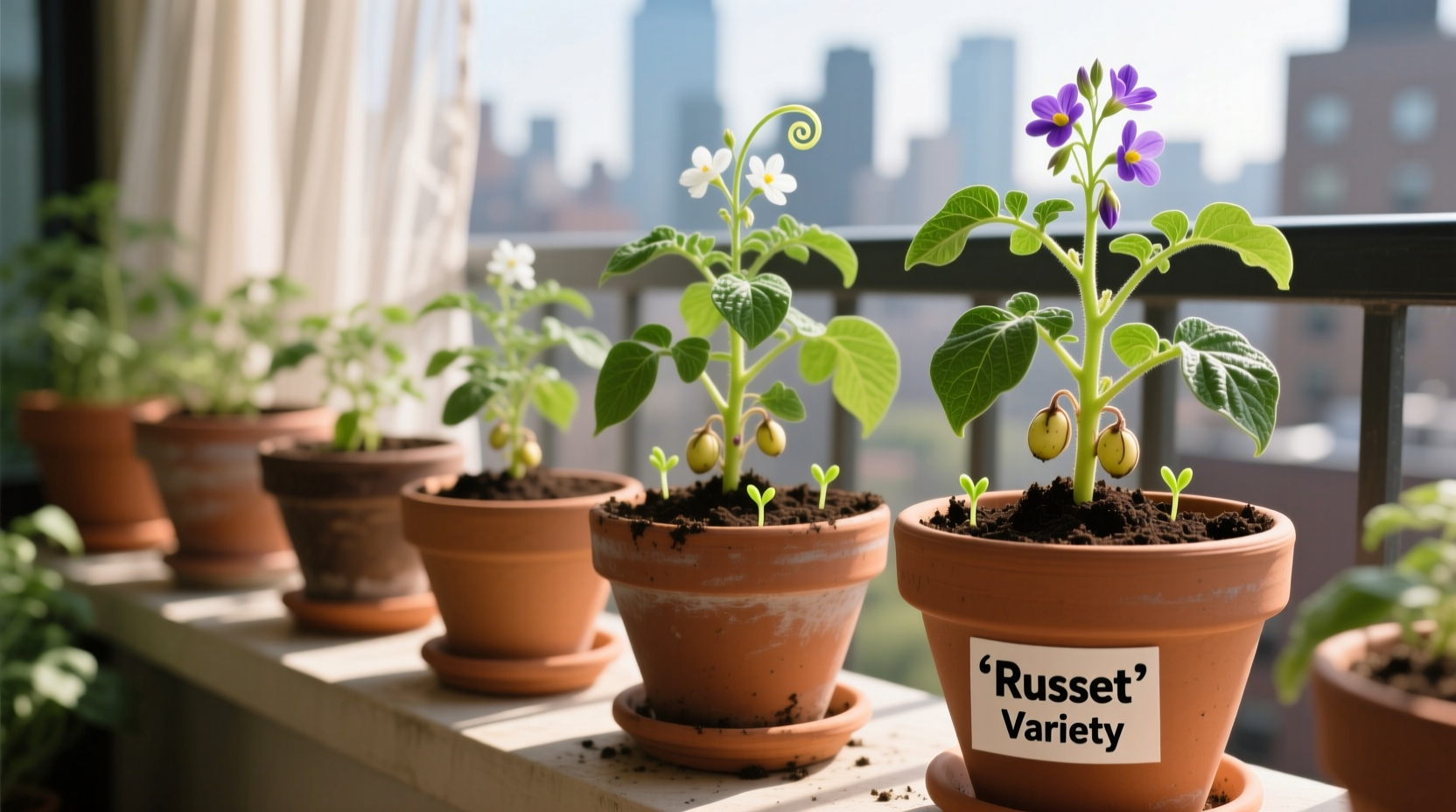Yes, you can successfully grow potatoes in pots with the right container size (minimum 15 gallons), proper soil mix, suitable potato varieties, and consistent care. This complete guide reveals proven techniques for harvesting 5-10 pounds of homegrown potatoes from containers, even in small-space environments like balconies or patios.
Why Container Potato Growing Works for Urban Gardeners
Container gardening solves space limitations while giving you complete control over soil conditions. Unlike traditional in-ground methods, pots prevent soil-borne diseases and make harvest dramatically easier. The University of Minnesota Extension confirms that properly managed container systems can yield comparable results to garden beds when following specific cultural practices.
Planning Your Potato Container Garden
Before planting, consider these critical planning factors that determine your success:
Container Selection Guidelines
Choose containers with adequate volume and drainage. The Cornell University Cooperative Extension recommends:
- Minimum 15-gallon capacity (57 liters) for full-sized potato plants
- At least 16-20 inches in diameter and 15-18 inches deep
- Multiple drainage holes (6-8 minimum for large containers)
- Material considerations: Fabric pots provide superior aeration compared to plastic
| Container Type | Best For | Limitations |
|---|---|---|
| Fabric grow bags | Excellent drainage, prevents root circling | Dries out faster in hot weather |
| Plastic containers | Retains moisture well, durable | Requires careful drainage management |
| Wooden crates | Natural aesthetics, good insulation | May degrade over time, requires lining |
Potato Varieties That Thrive in Containers
Not all potatoes perform equally in confined spaces. Early and mid-season varieties typically yield best in containers due to their shorter growing cycles. The Royal Horticultural Society identifies these top-performing container varieties:
- Yukon Gold - Reliable producer, versatile culinary potato, matures in 70-90 days
- Red Norland - Excellent for early harvest, disease-resistant, 75-85 days
- Kennebec - High yield potential, stores well, 90-100 days
- All Blue - Unique color, good container performer, 85-95 days
Avoid large russet varieties like Russet Burbank for containers, as they require more space for proper tuber development.
Preparing for Planting Success
Soil Mix Requirements
Standard potting soil won't suffice for potatoes. Create this optimal mix:
- 60% high-quality potting mix
- 30% compost (well-aged)
- 10% coarse sand or perlite for drainage
- Add 1 cup organic potato fertilizer per 15-gallon container
Seed Potato Preparation
Never use grocery store potatoes—they're often treated to prevent sprouting. The University of California advises using certified disease-free seed potatoes. Prepare them properly:
- "Chit" potatoes 2-3 weeks before planting by placing them in indirect light
- Allow 1-2 inch sprouts to develop
- Cut larger potatoes into 1.5-2 ounce pieces with at least 2 eyes each
- Let cut pieces dry for 24-48 hours before planting
Step-by-Step Planting Process
Planting Timeline
Follow this container-specific planting sequence for optimal results:
- Week 1: Fill container one-third full with soil mix
- Week 2: Place seed potatoes 4-6 inches apart, eyes up, cover with 4 inches soil
- Week 3-4: When plants reach 6-8 inches tall, add soil to cover all but top leaves
- Week 5-8: Repeat hilling process as plants grow, stopping when container is full
- Week 9-12: Maintain consistent moisture as tubers develop
Watering Techniques That Prevent Common Problems
Container potatoes need precise watering. The Old Farmer's Almanac recommends:
- Water deeply when top 2 inches of soil feel dry
- Maintain consistent moisture (not soggy) during tuber formation
- Reduce watering as harvest approaches to toughen skins
- Water early morning to prevent disease
Container-grown potatoes typically need 1-2 inches of water weekly, increasing during hot, dry periods. Fabric pots may require daily watering in summer heat.

Troubleshooting Container Potato Problems
Common Issues and Solutions
Address these frequent container-specific challenges:
- Small tubers: Usually caused by insufficient container size or overcrowding—use minimum 15-gallon containers with 3-5 seed potatoes maximum
- Cracked potatoes: Result from inconsistent watering—maintain even soil moisture
- Yellowing leaves: Could indicate overwatering or nutrient deficiency—check drainage and fertilize appropriately
- Pests: Colorado potato beetles can still affect container plants—hand-pick or use organic neem oil
Fertilizing Schedule for Maximum Yield
Container potatoes need regular feeding since nutrients leach from frequent watering:
- At planting: Mix balanced organic fertilizer into soil
- 4 weeks after planting: Apply potassium-rich fertilizer
- When flowering begins: Side-dress with compost tea
- Avoid high-nitrogen fertilizers which promote foliage over tubers
Harvesting Your Container Potatoes
When and How to Harvest
Container harvesting is remarkably simple compared to digging garden beds:
- Early potatoes: Harvest when plants flower (70-90 days), look for small "new" potatoes
- Main crop: Wait until foliage yellows and dies back (90-120 days)
- Harvest method: Tip container sideways on tarp—tubers will spill out with minimal damage
- Cure harvested potatoes in cool, dark place for 1-2 weeks before storage
Expect 5-10 pounds of potatoes from a properly managed 15-gallon container, depending on variety and growing conditions.
Container Potato Growing Limitations
While container growing offers many advantages, understand these context boundaries:
- Not suitable for commercial-scale production—best for personal consumption
- Requires more frequent watering than in-ground gardening
- Limited to 3-5 plants per container for optimal yield
- Temperature fluctuations affect container soil more than garden beds











 浙公网安备
33010002000092号
浙公网安备
33010002000092号 浙B2-20120091-4
浙B2-20120091-4